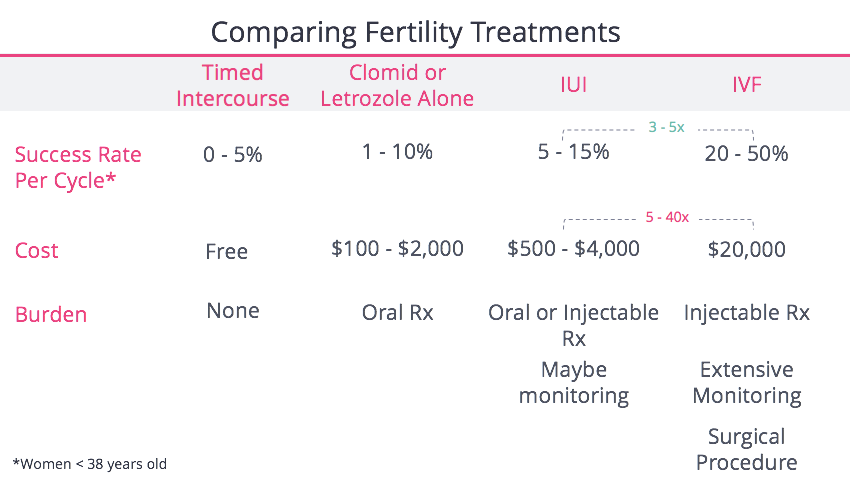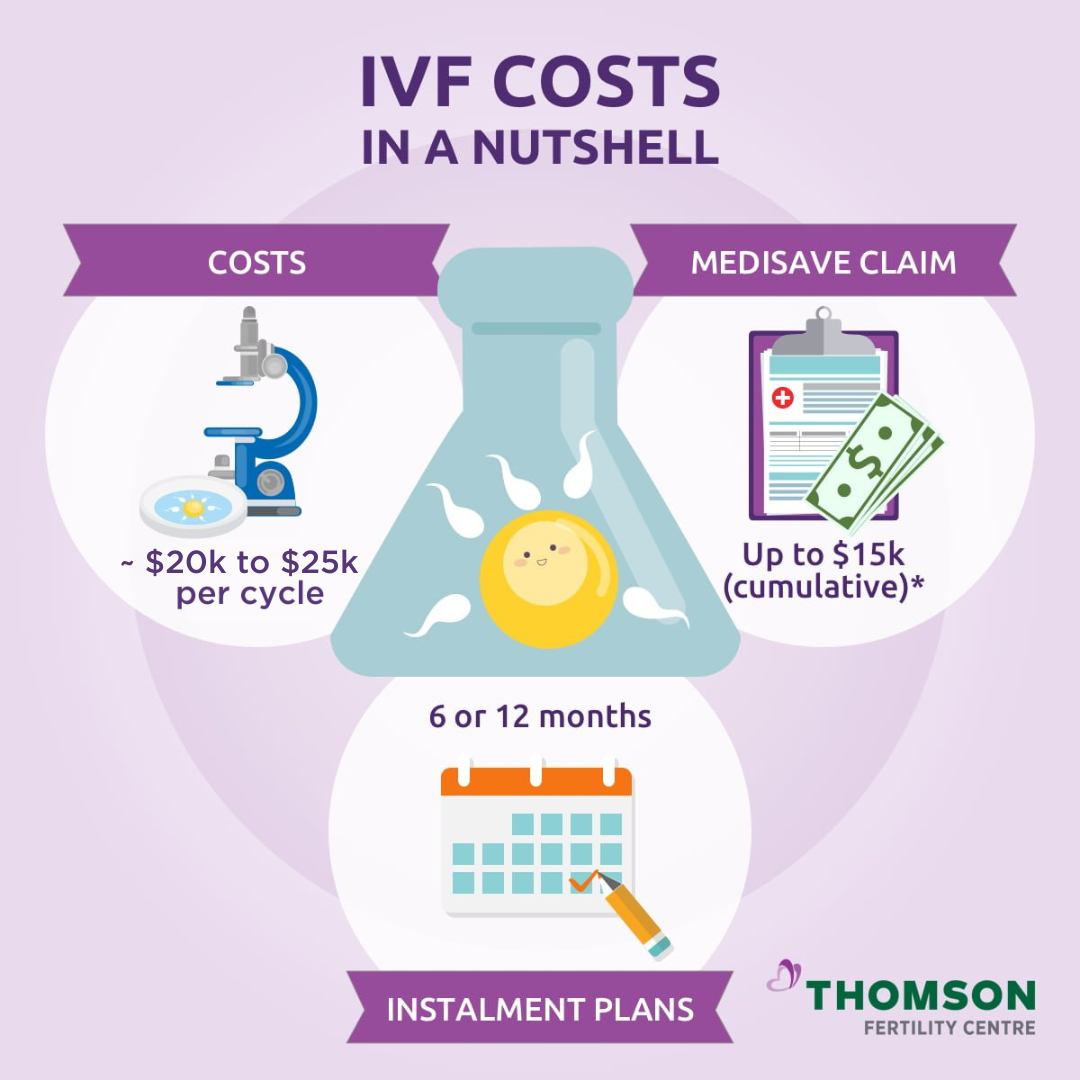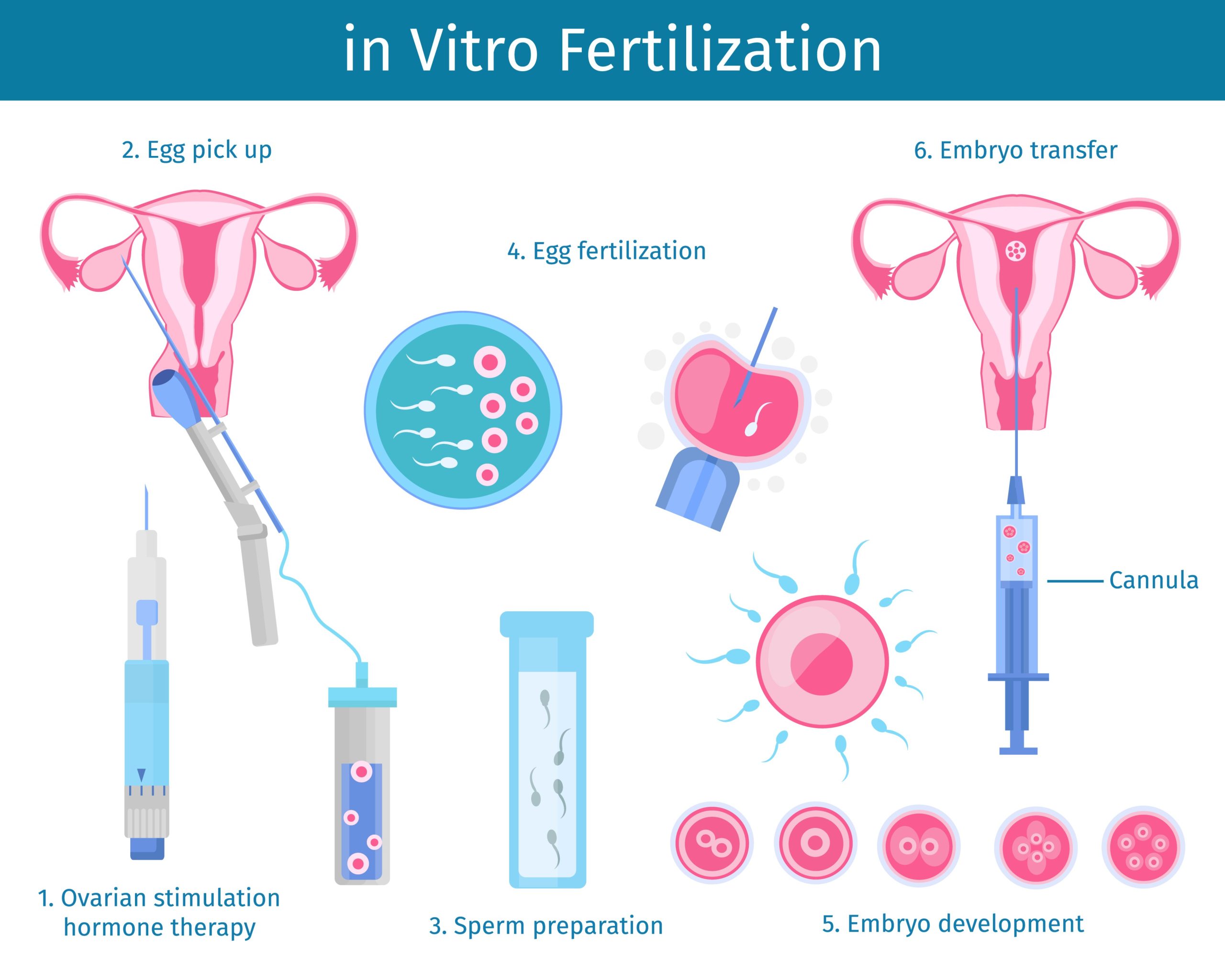How Much Is One Round of IVF? Your Complete Guide to Costs and What to Expect
In vitro fertilization (IVF) is a life-changing option for many hoping to build a family, but the price tag can feel like a big question mark. If you’re wondering how much one round of IVF costs, you’re not alone—it’s one of the first things people want to know when they start this journey. The truth is, the answer isn’t simple. Costs can vary wildly depending on where you live, the clinic you choose, and what your body needs to make it work. But don’t worry—I’m here to break it all down for you in a way that’s easy to follow, with real numbers, fresh insights, and tips to help you plan.
Think of this as your roadmap to understanding IVF costs. We’ll cover the basics, dig into hidden expenses, explore ways to save, and even look at what’s new in 2025. Whether you’re just curious or ready to take the plunge, you’ll walk away with a clearer picture of what to expect—and maybe a little more confidence, too.
What’s the Average Cost of One IVF Cycle?
One round of IVF—called a cycle—typically costs between $12,000 and $30,000 in the U.S. That’s a big range, right? The American Society for Reproductive Medicine pegs the average at around $12,400 for a basic cycle, but most people end up spending closer to $20,000 when you add in extras like medications and tests. Why the difference? It’s all about what’s included and what’s not.
A “basic” IVF cycle usually covers:
- Monitoring your ovaries with ultrasounds and blood tests.
- Egg retrieval (a quick procedure to collect eggs).
- Fertilizing the eggs in a lab.
- Transferring an embryo into the uterus.
But here’s the catch: that base price often skips things like fertility drugs (which can add $3,000-$6,000) or special techniques like ICSI (where they inject sperm directly into the egg, costing $1,000-$2,000 more). And if you need to freeze embryos for later? That’s another $1,000-$6,400 depending on the clinic and how long you store them.
In 2025, costs are creeping up a bit—about 5-10% higher than a few years ago—thanks to inflation and more people using advanced options like genetic testing. For example, a clinic in San Francisco might charge $24,749 for a full cycle, while one in New Jersey could be around $22,999. Location matters, and so does the clinic’s reputation.
Why Does IVF Cost So Much?
IVF isn’t cheap because it’s a high-tech process that takes a team of experts. Imagine it like a science experiment mixed with a medical marathon. You’ve got doctors, nurses, lab techs, and fancy equipment all working together to give you a shot at a baby. Here’s where the money goes:
- Fertility Medications: These drugs kick your ovaries into gear to produce multiple eggs. A typical round might cost $3,000-$6,000, but if you need higher doses or longer treatment, it could hit $10,000.
- Lab Work: The magic happens in the lab—fertilizing eggs, growing embryos, maybe even testing them for genetic issues. This part alone can be $5,000 or more.
- Procedures: Egg retrieval and embryo transfer sound simple, but they’re precise surgeries with anesthesia, often costing $3,000-$5,000 combined.
- Clinic Fees: Rent, staff salaries, and cutting-edge tools add up. Big-city clinics with high success rates tend to charge more.
And that’s just the start. If something unexpected pops up—like low sperm count or a need for donor eggs—the bill climbs fast. It’s a lot to take in, but knowing what drives the cost can help you ask the right questions when you talk to a clinic.

Breaking Down the IVF Process and Its Costs
To really get a handle on what you’re paying for, let’s walk through a typical IVF cycle step-by-step. Each phase has its own price tag, and some clinics bundle them while others don’t. Here’s what happens:
Step 1: Initial Consultation and Testing
Before anything starts, you’ll meet with a fertility specialist. They’ll run tests—bloodwork, ultrasounds, maybe a semen analysis—to figure out what’s going on. This can cost $200-$1,500, depending on how much your insurance covers. Some clinics roll this into the cycle fee, but many don’t.
Step 2: Ovarian Stimulation
For 10-14 days, you’ll take hormone shots to boost egg production. These meds are pricey—think $3,000-$6,000. Your dose depends on your age, weight, and how your body responds. Younger women might need less; older women or those with low egg reserves might need more.
Step 3: Egg Retrieval
Once your eggs are ready, a doctor uses a needle to collect them while you’re under light sedation. This outpatient procedure runs $2,000-$5,000, including anesthesia. It’s quick—about 20 minutes—but it’s a big chunk of the cost.
Step 4: Fertilization and Embryo Growth
In the lab, eggs meet sperm (either naturally or via ICSI). The embryos grow for 3-6 days. This lab work is usually $3,000-$5,000. If you add genetic testing (called PGT), tack on another $3,000-$5,000.
Step 5: Embryo Transfer
The best embryo gets placed in your uterus—a simple procedure that takes 10 minutes and costs $1,000-$3,000. If you freeze extras, that’s $1,000-$2,000 upfront, plus $300-$600 per year for storage.
Step 6: Follow-Up
After the transfer, you’ll have blood tests to check for pregnancy. These are usually $100-$500. If it works, great! If not, you might need another cycle.
Add it all up, and a “basic” $12,000 cycle can easily balloon to $20,000-$25,000 with meds and extras. Seeing it laid out like this makes it less mysterious—and helps you spot where costs might sneak up.
Hidden Costs You Might Not Expect
The base price is just the beginning. Plenty of expenses catch people off guard, and I don’t want that to happen to you. Here are some curveballs to watch for:
- Pre-IVF Testing: Some clinics require extra tests—like checking your uterine lining or doing a mock transfer—that can add $500-$2,000.
- Canceled Cycles: If your ovaries don’t respond to meds, the cycle might stop early. You could still owe $5,000-$10,000 for what’s already done.
- Frozen Embryo Transfers (FET): If your first transfer fails but you have frozen embryos, transferring one later costs $3,000-$6,400.
- Travel: If the best clinic isn’t nearby, gas, flights, or hotel stays pile up fast—sometimes $500-$2,000 per cycle.
- Emotional Support: Therapy or support groups aren’t free. A session might be $100-$200, and many find it worth it.
A 2024 study from Stanford found that 1 in 5 couples faced unexpected IVF costs of $5,000 or more. Planning for these surprises can save you stress down the road.

How Location Affects IVF Costs
Where you live plays a huge role in what you’ll pay. IVF in a big city with a high cost of living—like New York or Los Angeles—can top $25,000 per cycle. In smaller towns or states like Texas, you might find clinics charging closer to $15,000. Why? Rent, salaries, and demand all push prices up in urban areas.
Here’s a quick look at averages in 2025:
| City/State | Average Cost per Cycle |
|---|---|
| San Francisco, CA | $24,749 |
| New York, NY | $23,474 |
| Chicago, IL | $20,000 |
| Atlanta, GA | $18,000 |
| Texas (statewide) | $15,000-$18,000 |
Clinics with top success rates—like CCRM in Colorado or Shady Grove in Maryland—often charge a premium, too. But cheaper doesn’t always mean worse. Some smaller clinics offer great care at lower rates, so it’s worth shopping around.
Insurance and IVF: What’s Covered?
Most insurance plans don’t fully cover IVF, which is a bummer. But 19 states have laws in 2025 requiring some fertility coverage, and that can make a difference. States like California, New York, and Illinois mandate that employers offer plans with IVF benefits, though small companies and self-insured ones might be exempt.
Here’s what you might get:
- Diagnostic Tests: Often covered—think $200-$500 out of pocket instead of $1,500.
- Medications: Partial coverage could cut your $5,000 bill to $1,000-$2,000.
- Full IVF: Rare, but if you’re lucky, your plan might cap your cost at $5,000-$10,000 per cycle.
Check your policy or call HR. Ask: “Does this cover IVF cycles, meds, or just testing?” If you’re in a non-mandate state like Florida or Arizona, you’re likely paying out of pocket unless your employer opts in. About 31% of U.S. employers offered fertility benefits in 2024, up from 25% in 2020, so it’s worth a look.
Interactive Quiz: What’s Your IVF Budget?
Let’s make this personal. Answer these quick questions to estimate your costs. Jot down your answers and tally up at the end!
- Where do you live?
- A) Big city (e.g., NYC, LA) = $25,000
- B) Medium city (e.g., Atlanta, Chicago) = $20,000
- C) Smaller town or rural area = $15,000
- Will you need meds?
- A) Yes, average dose = $5,000
- B) Yes, high dose = $8,000
- C) No (rare, but possible) = $0
- Any extras like ICSI or freezing?
- A) Yes, both = $5,000
- B) Just one = $2,500
- C) None = $0
Add your numbers: _____. That’s your rough starting point! Most people land between $20,000-$30,000. Surprised? Let’s keep going to see how you can tweak that.
Ways to Lower Your IVF Costs
Paying for IVF doesn’t have to break the bank. People get creative, and you can, too. Here are some practical ideas:
- Shop Around: Call 3-5 clinics. Ask for a detailed breakdown—some offer discounts if you pay upfront or do multiple cycles.
- Mini-IVF: Uses less medication, dropping costs to $5,000-$7,000 per cycle. Success rates are lower, but it’s a solid option for some.
- Financing: Clinics partner with companies like Future Family for 0% APR loans or payment plans. A $20,000 cycle could be $400/month over 5 years.
- Grants: Groups like Baby Quest give $2,000-$15,000 to qualifying families. Apply early—funds run out fast.
- Tax Breaks: The IRS lets you deduct medical expenses over 7.5% of your income. Spend $25,000 and earn $50,000? You could deduct $21,250.
In 2025, “fertility tourism” is trending—traveling to places like Mexico or Spain, where IVF can cost $5,000-$10,000. Just factor in travel and vet the clinic’s success rates first.
What If You Need More Than One Cycle?
Here’s a tough truth: most people don’t get pregnant on their first try. The average patient needs 2-3 cycles, pushing total costs to $40,000-$60,000. Success rates depend on age:
- Under 35: 50-55% per cycle.
- 35-40: 30-40%.
- Over 40: 10-20%.
If your first cycle fails, don’t panic. Frozen embryo transfers (FET) are cheaper—$3,000-$6,000—and use embryos from your first round. Some clinics offer “multi-cycle packages” for $25,000-$35,000, covering 2-3 attempts. It’s a gamble, but it can save you money if you need multiple shots.
The Emotional Cost of IVF (and How to Manage It)
Money isn’t the only thing you’ll spend. IVF is an emotional rollercoaster—hope, stress, and sometimes heartbreak. A 2024 study from Sweden found women who didn’t conceive after IVF were 48% more likely to need mental health support five years later. That’s huge.
Try these to keep your sanity:
- Talk It Out: A therapist or support group can be a lifeline. Online ones are often free.
- Set Boundaries: Decide how many cycles you’ll try before taking a break.
- Self-Care: Yoga, walks, or even a good Netflix binge can recharge you.
One couple I heard about kept a “hope jar”—every time they hit a milestone (like egg retrieval), they added a note. It reminded them why they started, even when the bills piled up.

New in 2025: Trends That Could Change IVF Costs
IVF is evolving, and 2025 brings some game-changers. Here’s what’s buzzing:
- AI in Embryo Selection: Clinics are using artificial intelligence to pick the healthiest embryos, boosting success rates by 10-15%. It’s $500-$1,000 extra now, but could save you a cycle later.
- At-Home Monitoring: Some places let you track your cycle with mail-in kits, cutting clinic visits (and costs) by $200-$500.
- Global Access: More countries are offering subsidized IVF. In Canada, a cycle might be $8,000 with government help—tempting for border-hoppers.
These aren’t everywhere yet, but they’re worth asking about. Tech could make IVF smarter and cheaper in the long run.
Real Stories: What People Actually Paid
Numbers are great, but stories hit home. Here’s what three families spent in 2024-2025:
- Jess, 32, Chicago: One cycle with ICSI and meds = $22,000. Pregnant on the first try. “We saved for two years—it was worth every penny.”
- Mike and Tara, 38, Texas: Two cycles, including freezing = $38,000 total. Second FET worked. “The hidden fees got us—travel and storage added $3,000.”
- Lila, 41, NYC: Three cycles with donor eggs = $65,000. Still trying. “Insurance covered nothing. We’re maxed out but not giving up.”
Every journey’s different, but hearing real experiences can ground you—and maybe spark a question for your doctor.
Interactive Checklist: Are You Ready for IVF Costs?
Let’s get practical. Check off what you’ve got covered:
- ✔️ I’ve called my insurance to see what’s covered.
- ✔️ I’ve budgeted for at least $20,000 (just in case).
- ✔️ I’ve researched 2-3 clinics for price quotes.
- ✔️ I’ve looked into financing or grants.
- ❌ I haven’t thought about travel or extra tests yet.
Missing a few? No sweat—start with one today. Even small steps move you forward.
IVF Around the World: Is It Cheaper Elsewhere?
If U.S. prices feel steep, look abroad. “Reproductive tourism” is growing, with places like these slashing costs:
- Mexico: $5,000-$8,000 per cycle. Close for Americans, but check clinic credentials.
- Spain: $6,000-$10,000. High success rates and EU standards.
- India: $3,000-$5,000. Super affordable, though travel and language barriers can complicate things.
A 2025 report from Grand View Research says the global IVF market hit $25.3 billion last year, with cheaper options driving demand. Just weigh travel costs and risks—$5,000 sounds great until a $2,000 flight eats the savings.
The Big Question: Is IVF Worth It?
Cost isn’t just dollars—it’s what you get for them. IVF’s success rate hovers around 40% per cycle overall, but your odds depend on your situation. For some, $20,000 is a small price for a baby. For others, it’s a tough call after multiple tries.
Think about:
- Your Goals: One kid? Twins? Just trying once?
- Your Limits: How much can you spend before it’s too much?
- Your Why: What’s driving you—family, legacy, love?
A 2023 study in Frontiers in Global Women’s Health found IVF offers “good value” for money when it works, but the emotional and financial toll can outweigh it if it doesn’t. Only you can decide what “worth it” means.
Your Next Steps: Planning for IVF in 2025
Ready to dive in? Here’s how to start:
- Call Your Insurance: Get the scoop on coverage—don’t guess.
- Pick a Clinic: Compare costs and success rates. Ask: “What’s included? Any discounts?”
- Save Smart: Set aside $500/month now, and explore loans or grants.
- Talk to Your Partner: Agree on a budget and a stopping point.
- Ask Questions: “What if my cycle’s canceled? What’s the FET cost?”
IVF’s a big deal, but you don’t have to figure it out alone. Clinics have financial counselors—use them. And if you’re still on the fence, chat with someone who’s been there. Real advice beats Google every time.
Final Thoughts: You’ve Got This
One round of IVF can cost anywhere from $12,000 to $30,000—or more if life throws curveballs. It’s a lot, no question. But breaking it down—step by step, dollar by dollar—makes it less overwhelming. You’re not just paying for a procedure; you’re investing in a chance at something huge. Whether it’s your first cycle or your third, knowing what’s ahead lets you take control.
So, what’s your plan? Maybe it’s calling a clinic tomorrow or running that quiz again with your spouse. Whatever it is, you’re already one step closer. And that’s something to feel good about.





